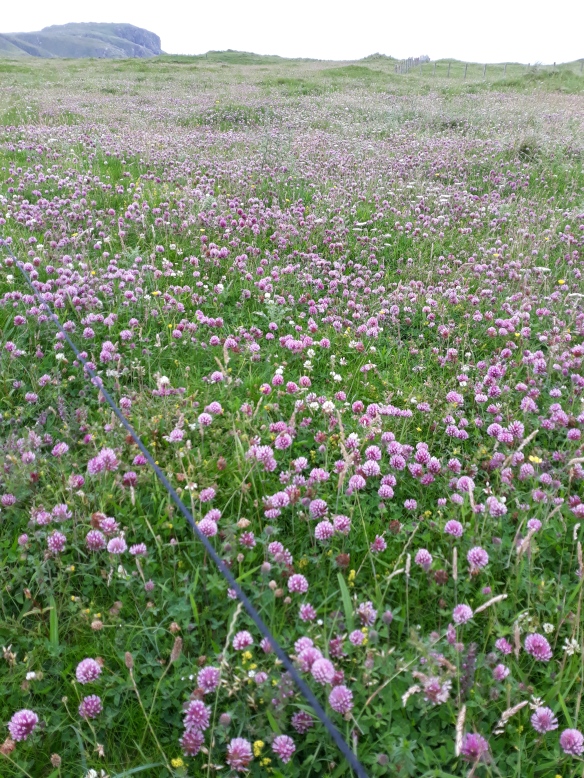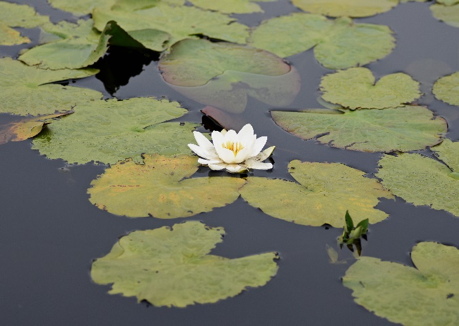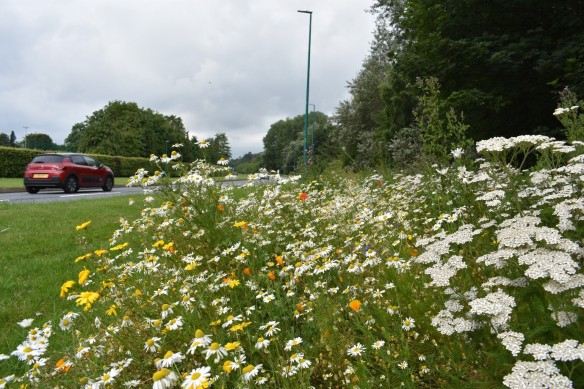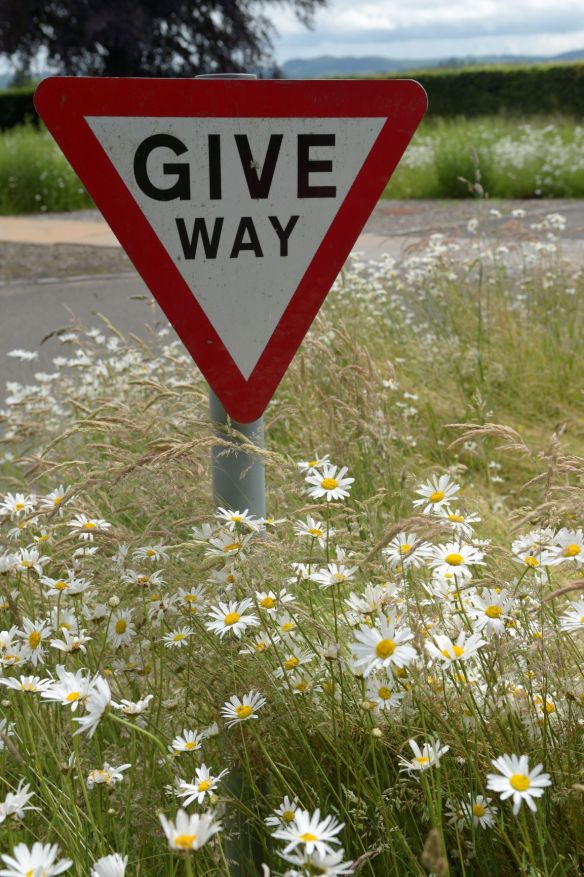By Janet Bowler
In my previous blog about ‘Tiree’s Great Yellow Bumblebee Project’, I described how residents of all ages on the Isle of Tiree in the Inner Hebrides established a community project to help protect an important population of the UK’s second rarest bumblebee – the great yellow bumblebee (GYBB) Bombus distinguendus.

Great Yellow Bumblebee on phacelia (C) Amy Millard
Through planting areas of ‘mini-machairs’ and GYBB ‘super-food’, conducting bumblebee surveys and holding bumblebee events, the species has benefitted from increased foraging habitat, greater local knowledge and awareness of the species’ status and needs, and a sense of community ownership. That was in the first half of the project (2017-2018).

Great Yellow Bumblebee (c) Andy Robinson
In the second half (2019-2020), the project is still going strong and developing in new ways. We continue to plant new areas of forage and monitor the success of plantings, continue to conduct bumblebee surveys, and are creating a storybook for children.
We were delighted when staff at Tigh a’ Rudha, the local Eventide Care Home, asked us to get involved in the creation of a Sensory Garden for the residents. The garden was constructed in two parts; an area of formal raised beds with bright garden flowers and visual and tactile objects, and a more natural area of wild flowers to attract bumblebees and butterflies. It is our hope that by next summer, the Home’s residents will be able to enjoy the sights, sounds and smell of the machair again.
The total number of GYBBs counted during surveys in 2019 was 220. Although fewer than 2018’s extraordinary count of 370, it does not necessarily mean that there were fewer GYBBs around. The totals partly reflect the amount of effort put into searching for them, and it won’t be until we have calculated the number of bees seen per observer hour, that we will be able to make comparisons between years. We plan to do this at the end of this year once all the survey data are in for the period 2017-2020.

Jeannies mini-machair patch
Last summer’s weather boosted growth of the GYBB’s main forage flowers. The machairs were lush with red clover and other key flowering plants, in densities not seen on the island for some years. It was extraordinary and commented upon by many of the island’s older residents.

Sandaig machair
With such abundance of forage during the busiest period of the GYBB’s breeding cycle, we were optimistic that 2019 would be an excellent year for GYBB population growth, and that more daughter queens would survive into the following spring. And it looks as though this may be proving true. At the end of last month (June 2020), when hibernating queens first emerged from their winter burrows, we recorded more queens than ever before. A record-breaking 12 queen GYBBs were spotted in one hour in an area of dense kidney-vetch flowers. Normally, we would be satisfied with 2-3 queens in one hour! Will this summer’s surveys provide one of the highest counts ever?

A draft book scene (C) Rou Worsley
Last, but certainly not least, a group of children from Tiree Primary School have written a storybook for children in Gaelic and English about the life of a queen GYBB and her struggle to raise a family. The children have created fun characters and a lively plot that ingeniously weaves in a conservation message about the relationship between machair habitat, human intervention and the species’ survival.
A local artist is transforming the children’s concepts into striking illustrations, and older Gaelic speakers from the community are helping with translation. We are enormously grateful to The Gaelic Books Council, RSPB Scotland, Tiree Association, Paircwood Publishing, Tiree Community Windfall Fund and a private donor, whose donations are making all this possible. The book launch is planned for this coming November.

Great Yellow Bumblebee on dandelion (C) John Bowler






























